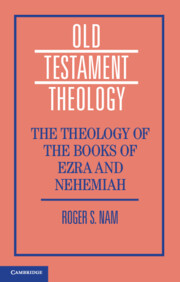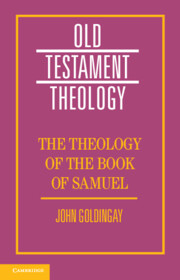Refine search
Actions for selected content:
110 results
1 - Prelude: Jerusalem, circa 1903
-
- Book:
- Palestinian Doctors
- Published online:
- 12 September 2025
- Print publication:
- 02 October 2025, pp 20-35
-
- Chapter
- Export citation
4 - Medical Landscapes
-
- Book:
- Palestinian Doctors
- Published online:
- 12 September 2025
- Print publication:
- 02 October 2025, pp 108-146
-
- Chapter
- Export citation
15 - Preaching on Life as a Pilgrimage
- from Part III - Augustine’s Preaching Themes
-
-
- Book:
- The Cambridge Companion to Augustine's Sermons
- Published online:
- 26 May 2025
- Print publication:
- 12 June 2025, pp 281-298
-
- Chapter
- Export citation
16 - Preaching on Heaven and Its Peace
- from Part III - Augustine’s Preaching Themes
-
-
- Book:
- The Cambridge Companion to Augustine's Sermons
- Published online:
- 26 May 2025
- Print publication:
- 12 June 2025, pp 299-316
-
- Chapter
- Export citation
2 - From Tactical Command to Political Negotiator
-
- Book:
- Moshe Dayan
- Published online:
- 03 April 2025
- Print publication:
- 10 April 2025, pp 48-89
-
- Chapter
- Export citation
Chapter 2 - Untangling the Threads of the Biblical Account with Literary Critical Scholarship
- from Part I - The United Monarchy in the Bible and Contemporary Scholarship
-
- Book:
- The Bible's First Kings
- Published online:
- 16 January 2025
- Print publication:
- 20 February 2025, pp 20-58
-
- Chapter
- Export citation
Nikos Kazantzakis on Palestine, Jerusalem, and the Zionist movement: literary and historical considerations
-
- Journal:
- Byzantine and Modern Greek Studies , First View
- Published online by Cambridge University Press:
- 03 February 2025, pp. 1-23
-
- Article
-
- You have access
- Open access
- HTML
- Export citation
3 - The Book of Isaiah and the Neo-Babylonian Period
- from Part I - The Book of Isaiah Through History
-
-
- Book:
- The Cambridge Companion to the Book of Isaiah
- Published online:
- 08 November 2024
- Print publication:
- 21 November 2024, pp 33-48
-
- Chapter
- Export citation
Chapter 6 - Profanation
- from Part III - “Kindred with the Mummy”
-
- Book:
- Temporal Forms and the Nineteenth-Century Mediterranean
- Published online:
- 09 November 2024
- Print publication:
- 14 November 2024, pp 196-220
-
- Chapter
- Export citation

The Theology of the Books of Ezra and Nehemiah
-
- Published online:
- 31 October 2024
- Print publication:
- 21 November 2024
Eighteen - Armenia and Byzantium
- from III - Languages, Confessions, Empire
-
-
- Book:
- Worlds of Byzantium
- Published online:
- 18 October 2024
- Print publication:
- 17 October 2024, pp 590-611
-
- Chapter
- Export citation
Fifteen - Patriarchs, Caliphs, Monks, Scribes, and the Byzantinization of Jerusalem’s Liturgy
- from III - Languages, Confessions, Empire
-
-
- Book:
- Worlds of Byzantium
- Published online:
- 18 October 2024
- Print publication:
- 17 October 2024, pp 468-501
-
- Chapter
- Export citation
Approaches towards legal protection for holy places: The example of the Alexander Nevsky Church in the Old City of Jerusalem
-
- Journal:
- International Journal of Cultural Property / Volume 31 / Issue 1 / February 2024
- Published online by Cambridge University Press:
- 23 September 2024, pp. 62-78
-
- Article
-
- You have access
- Open access
- HTML
- Export citation
Chapter 6 - Yahweh Who Establishes a King (2 Samuel 2–10)
-
- Book:
- The Theology of the Book of Samuel
- Published online:
- 08 May 2024
- Print publication:
- 09 May 2024, pp 141-177
-
- Chapter
- Export citation

The Theology of the Book of Samuel
-
- Published online:
- 08 May 2024
- Print publication:
- 09 May 2024
II.9 - Sæwulf, An Account of a Pilgrimage to Jerusalem
- from Twelfth Century
-
- Book:
- The Cambridge Anthology of British Medieval Latin
- Published online:
- 11 January 2024
- Print publication:
- 01 February 2024, pp 100-105
-
- Chapter
- Export citation
I.5 - Descriptions of the Holy Land
- from Seventh Century
-
- Book:
- The Cambridge Anthology of British Medieval Latin
- Published online:
- 11 January 2024
- Print publication:
- 01 February 2024, pp 74-82
-
- Chapter
- Export citation
Chapter 5 - Objects and Ritual in Egeria’s Fourth-Century Pilgrimage: The Props of My Faith
-
-
- Book:
- Senses, Cognition, and Ritual Experience in the Roman World
- Published online:
- 04 January 2024
- Print publication:
- 25 January 2024, pp 167-199
-
- Chapter
-
- You have access
- Open access
- HTML
- Export citation
29 - Alexander in Jewish and Early Christian Literature
- from Part IV - The Ancient World’s Memory of Alexander
-
-
- Book:
- The Cambridge Companion to Alexander the Great
- Published online:
- 04 January 2024
- Print publication:
- 18 January 2024, pp 471-487
-
- Chapter
- Export citation
6 - Commentary Part IV: The Regnal Account of King David ben Jesse over Israel – 2 Samuel 5:1–24:25/1 Kings 2:11
-
- Book:
- 1 – 2 Samuel
- Published online:
- 14 December 2023
- Print publication:
- 21 December 2023, pp 208-320
-
- Chapter
- Export citation
